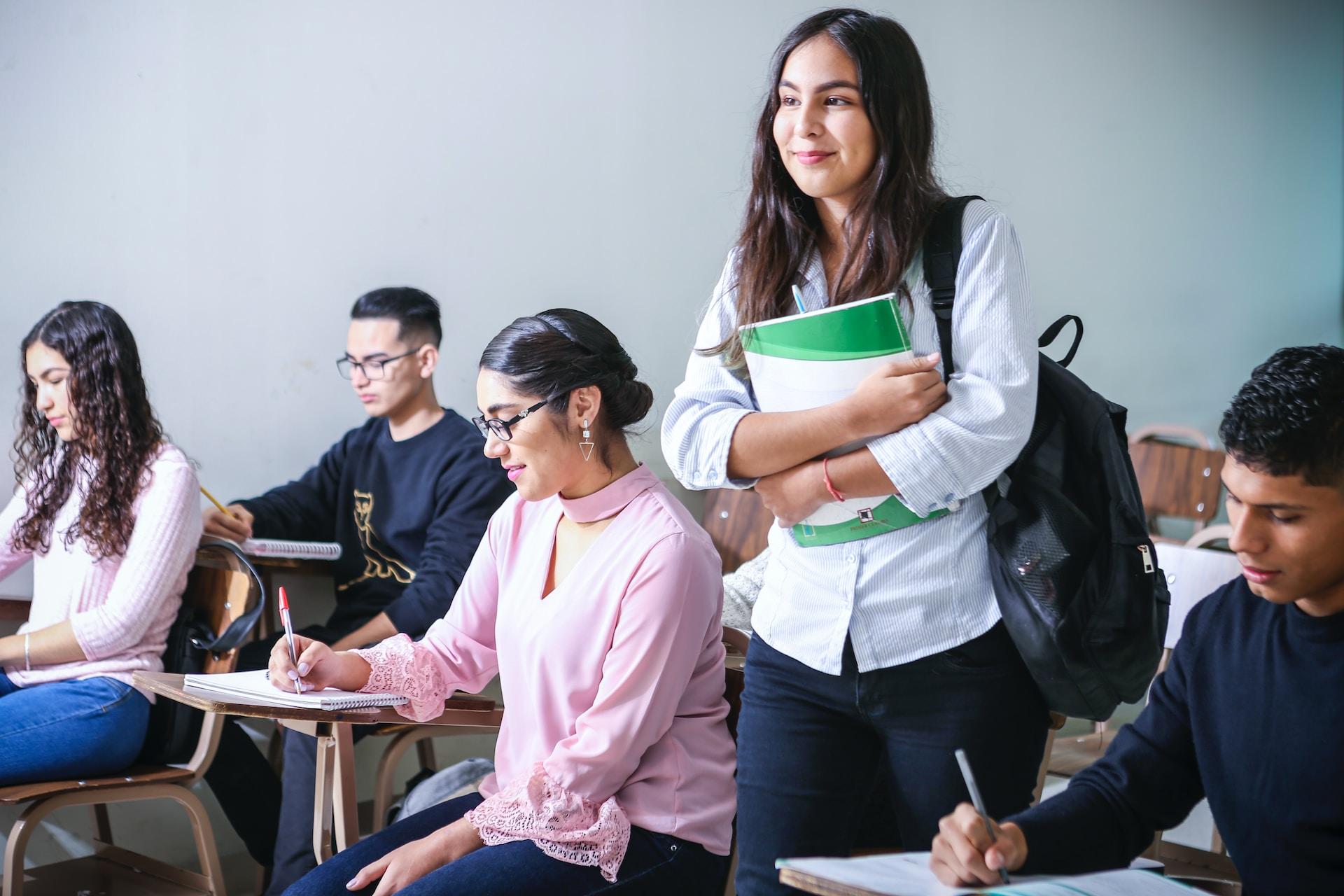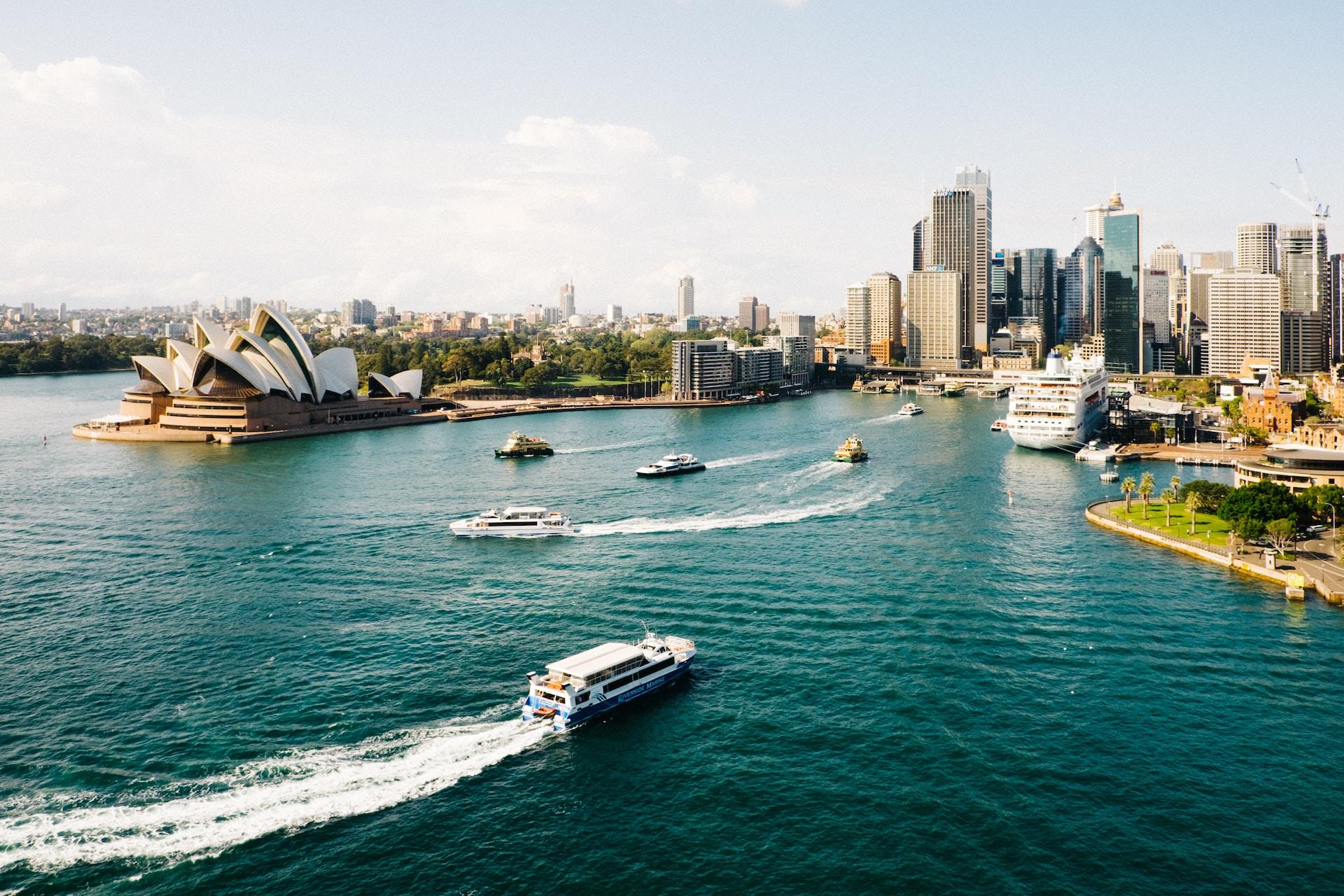Live Australia without a doubt.
Studying in Australia requires planning and preparation. To make it easier, Good Day offers an FAQ to help the student before boarding, on arrival, and during the journey.
Offer Letter
This document is the contract between the student and the education provider. It informs the course the student will be enrolled, the conditions of enrollment, the fees to be paid and the refund if the course is not started or completed.
The student will receive the Offer Letter when its application is accepted by the chosen educational institution. To confirm the offer, you must sign the letter and return it to the institution.
Important:
- Read the Offer Letter carefully before accepting it;
- Ensure all your rights, including repayment agreements;
- Do not accept the Offer Letter if you are not satisfied with any term;
- Keep a copy of the document to be sure of your rights if you have to make a complaint against the institution.
COE
The Confirmation of Enrollment (COE) is an official document issued to international students by Australian educational institutions. The COE is required by the Department of Immigration and Border Protection during the student visa application.
Important:
Once you have confirmed the Offer Letter and paid for the course, you will receive the COE. The document will inform you of the start date, the amount paid and the duration of the course.
GTE Letter
The Genuine Temporary Entrant (GTE) is a letter of intent that shows whether the student is genuine. In this document, the international student should state the reasons why it decided to study in Australia and show that the student visa will be used as due.
In assessing the document, immigration considers:
- Consistency of choices (school, course, country);
- Immigration history;
- If the student is under 18 years old, the intention of the parent, legal guardian or partner;
- Any other questions are relevant to the study plan.
Important:
GTE helps the Immigration Department identify applicants who are using the student visa program for other reasons besides obtaining a quality education. Nevertheless, the document was not designed to exclude people who, after studying in Australia, develop the skills required by the Australian labor market and apply to become permanent residents.
In addition to the GTE to apply for a student visa, some documents are required, such as:
- Passport;
- School certificates;
- Curriculum;
- Work permits.
Other documents may also be required.
HAP ID
HAP ID is a request issued by the Department of Immigration and Border Protection (DIBP) that requires student health checks to prove that it meets these requirements.
Health insurance
There are two types of health insurance for travelers to Australia: OVHC and OSHC.
Overseas Visitors Health Cover (OVHC) is the insurance intended for tourists, as foreign visitors on temporary visas are not eligible for Medicare benefits unless they are from a country with which Australia has a ” Reciprocal Health Care Contract “. Australia currently has agreements with the United Kingdom, Malta, Finland, Sweden, Italy, New Zealand, the Netherlands, Ireland, Belgium, Norway, and Slovenia. Some private health insurers and general insurers provide health coverage for foreign visitors. Available benefits, membership costs, and eligibility may vary between insurers. If you want an indication, contact our team.
The Overseas Student Health Cover (OSHC) is the compulsory insurance for international students and their dependents to help with the hospital and medical care costs they may need while in Australia. This insurance also guarantees limited benefits for pharmaceuticals and ambulance services.
Beginning July 1, 2010, students must contract with OSHC for the duration of their visa. If extended, OSHC must also be renewed for the period of time.
Important:
When hiring insurance, it is recommended that the student know the name of the providing company, the date on which coverage begins and ends, and the policy terms and conditions.
The insurers offering OSHC are:
- Australian Health Management;
- Allianz;
- BUPA;
- Medibank;
- NIB
Accommodation
The most common types of accommodation in Australia are homestay, student residence, shared house, and rent.
In Down Under, bills are paid weekly or fortnightly, and it also applies to accommodation expenses.
Another common practice in the country is the bond, this is a security deposit that the tenant makes to the homeowner or real estate owner before moving. The amount, which goes from two to six weeks of rent, is retained until the end of the lease. If the apartment is not damaged during the stay, the renter will recover the full value of the bond when leaving the property.
Family home
The student who chooses this type of accommodation will live in the home of a family that will “adopt” it during the contracted time. This option allows the student to experience the culture closely and learn more about the habits of the native people of the country.
Most of the houses are located in residential neighborhoods away from the major centers. Families may offer meals and may impose some rules on guest students, such as arrival times. It is recommended that the student talks with the possible families to know everything that is included in their accommodation package and also to understand more about the daily life of the residents of the house, about the room that will be assigned to them, the location of the property, access to public transport and whatever else interests you.
Student residence
In this space, usually a building, students can have their own room or share it with others, having access to some facilities such as the internet. Areas such as kitchen and laundry are shared.
Students should keep in mind that international students from around the world can use this service, which means that different cultural habits will meet in the same space. Should the person have any requirements, it is necessary to inform the company before closing the accommodation.
Shared house
This type of accommodation consists of sharing a house or apartment with other people, whether students or local residents. One of the residents is responsible for the contract and will sublet the rooms to the others.
The amount of people in the space depends on the size of the property and what was agreed between the residents themselves. Interviews are usually conducted to know better who is interested in integrating the house and the house rules are already presented.
For rent
Those who want more privacy can rent their own space. This can be done through companies, which rent studios, for example, and directly through real estate.
Real estate leasing in Australia works through a point system. Each document submitted has a score such as pay summary, passport, visa, proof of income and letter of recommendation. Property inspections are scheduled where all interested people will know the location and decide whether or not to apply.
Pre boarding
Bag Size
Each airline has its own baggage rules, ranging from two bags of 23kg to 32kg. The international student should check directly with the company that issued the ticket.
Hand baggage
- It is allowed to carry a maximum of 1 liter divided into 100 ml packages;
- It is allowed to take any amount of money. However, any amount over $ 10,000 must be declared;
- It is not allowed to carry aerosol and gel;
- Sporting goods, kitchen utensils, tools, and other items with sharp edges that may injure a person are not allowed.
Checked Baggage
Not allowed:
- Fresh foods such as fruits, vegetables, and meat;
- Weapons in general, including those for self-defense, such as pepper spray and stun gun;
- Steroids;
- Drugs;
- Items made of wood (only allowed if they are free of bark, insects and insect damage);
- Benzodiazepine group sedatives (e.g., diazepam, lorazepam);
- Pornography;
- Animal skin and leather products that have not been properly treated and cleaned.
Allowed, but limited:
- Other medications, including other sedatives and hormones, are permitted provided they are accompanied by a prescription on behalf of the passenger translated into English and in a quantity not exceeding three months;
- General merchandise purchased from Duty-Free that does not exceed $ 900 per adult and $ 450 per child;
- 2.25 liters of alcohol (over 18 years);
- 25 cigarettes (unit) or 25 grams of tobacco (over 18 years).
Incoming Passenger Card
All travelers entering Australia via the airport must complete a document stating the items they carry. This must be completed in English, and this document will be presented with the passport to an immigration officer before the passenger picks up the luggage.
Yellow fever vaccine
The traveler must carry the International Certificate of Vaccination or Prophylaxis, which must include proof of vaccination against yellow fever upon entering Australia.
Any passenger who is one year of age or older and who has spent a night or more in a country reportedly infected with yellow fever must carry this document at the time of travel as it may be requested by Immigration Officers in Australia.
Check List of Shipping Documents:
- Flight ticket;
- Valid passport;
- International Certificate of Vaccination or Prophylaxis;
- Confirmation of Enrollment;
- Copy of Australian visa.
Transfer
When arriving at their final destination, many travelers hire the shuttle service to their accommodation.
Besides this service, the international student can use taxi and Uber. For those looking to save money, Australia’s major airports have integrated train stations and special buses.
RSA
RSA or Responsible Service of Alcohol is a one-day course that addresses the laws on serving alcohol, who to serve, and how to identify symptoms of drunkenness.
In Australia, anyone working in a bar or selling alcohol needs to take this course.
Each state has its license and related rules.
White Card
For those intending to work in the field of construction, this course is aimed at developing knowledge about the area and a warning about how to practice the profession safely.
The license becomes void if the person does not perform construction work for two consecutive years or more. Each state has its own license and related rules.
Blue Card
This qualification is mandatory for those intending to work with traffic control and guidance.
In this course, the student learns how to use the stop and slow signs and to guide pedestrians and drivers on paths and paths blocked by any work or event.
Each state has its own license and related rules.
Yellow Card
This course is compulsory for those who intend to work in establishing a traffic control plan due to a job or event in a particular location.
It does not qualify the worker to use stop / slow signs and to select or modify an existing traffic control plan.
First aid
The course is compulsory, for example, for those who work with children or the elderly and teach about the use of equipment such as CPR (Cardiopulmonary Resuscitation), how to administer epinephrine and etc.
Work experience
It is a professional experience required while the student is still an undergraduate.
To complete some courses, these work experiences are required.
While not required, getting work experience is a way of knowing how things work in your chosen field. It is also an opportunity to show the potential employer’s performance in the workplace, as well as being a differentiator in the curriculum.
Businesses typically run the work experience for a few weeks, and the activity usually coincides with the school vacation so that studies are not interfered with.
The activity can be both paid and unpaid, varying by company.
Intership
The internship is the transition from study to work. This activity serves to develop a student’s skills, making them more skilled and competent when entering the job market. The internship program is usually structured with the aim of developing the professional future. In most cases, this activity is unpaid.
Note: Unpaid activities will be considered illegal if the person is in a working relationship with the company or organization. To learn more, visit the Fair Work website.
Telephony
Upon arrival in Australia, the student can purchase a mobile phone sim card, which costs around AUD 5, at convenience stores, grocery stores and at the carrier’s own stores, and activates it using the passport. Activation instructions vary by carrier and usually come with the sim card.
Number
The mobile number in Australia, starting with “04” followed by an additional 8 digits, can be activated on the prepaid system, where the student recharges as much as it wants per month via the mobile app or website, or on the post system paid, where a contract is established with a carrier and an amount is fixed per month for a certain period.
Operators
The largest and most common carriers are Vodafone, Optus and Telstra.
Messaging and calling apps like WhatsApp work in Australia, but Australians tend to use SMS more.
If you are calling a cell phone, you do not have to dial the first zero of the number.
Emergencies
Telephone service known as “Triple Zero” (000) is the fastest way to get the right emergency service to help in a risky situation. Through this number, the person can contact the police, fire brigade or ambulance service.
The operator will ask what type of emergency and address and then will connect the person with the correct service.
The call has no cost. For more information, visit the official website.
Public transport
Public transport from major in Australia is made up of bus, train and ferry lines.
Each city has its electronic boarding pass and fare collection system, which vary according to distance, zones traveled and times used. This type of charge is only possible because of the passenger needs to tap on and off the card.
These cards are rechargeable and can be purchased at supermarkets, and authorized stores. You can also buy a ticket for a single trip, but it is usually more expensive.
To learn more, visit the page of each city.
Identification document
The official ID for international students within Australia is the passport. However, a driver’s license is also accepted for some activities, such as buying alcohol or entering an establishment for over 18s.
For those who prefer not to take the passport everywhere for security reasons, it is possible to make a Photo ID Card, which replaces the document in situations where the person needs to identify within the country.
Each state has its own rule and procedure for issuing the document.
Driver's license
It is possible to drive in Australia with the driver’s license from your own country, but always accompanied by an English translation, and respecting the type of vehicle allowed by the original document.
In most states, the driver may use the license for the same period as the student visa. After this time, if the type of visa changes (resident or work) or the document expires, the person is required to apply to the state card where they are residing, take a theoretical test and a practical test.
When applying for the Australian license, the driver will not necessarily start from the first stage of the Australian document. What will determine what type of license the person will take is the length of time they have in their own country.
TFN
Tax File Number is a nine-digit number issued by the Australian Taxation Office (ATO), the agency responsible for finance and the Australian tax system, which identifies the taxpayer.
The document is the registration number for the tax and the Australian “guarantee fund”. Every person working in Australia needs to have this record. The government is required to generate your number up to 28 business days.
If within 28 days the document does not arrive, you can consult by phone at 13 28 61 (you can ask for a Portuguese interpreter if you need to).
And once the document arrives, you will be able to access the Australian Taxation Office (ATO) system and make any desired changes.
USI
Everyone studying in Australia needs to create the USI, Unique Student Identifier.
Through it, the government can follow the educational development of each individual.
This register generates a code, consisting of 10 numbers and letters, and creates a secure online record of your studies in the country.
ABN
Australian Business Number (ABN) is the eleven-digit number of a company’s registration. Those who use ABN must issue invoices to contractors after providing services.
Required Documents and Information
To apply to an ABN as sole entrepreneur you must present:
- Tax File Number;
- Legal name of the company;
- Contact information (phone, email);
- Business activity details;
- Business address.
Before applying
You are entitled to open an ABN if:
- acquire or start a business in Australia or companies registered with the Australian Securities and Investments Commission.
When you apply online for an ABN, you will be asked questions to see if the person is eligible for registration. Applicants should be aware that for each incorrect or false information, fines of up to $ 12,600 may apply.
If you are not entitled to registration, the request will be denied.








